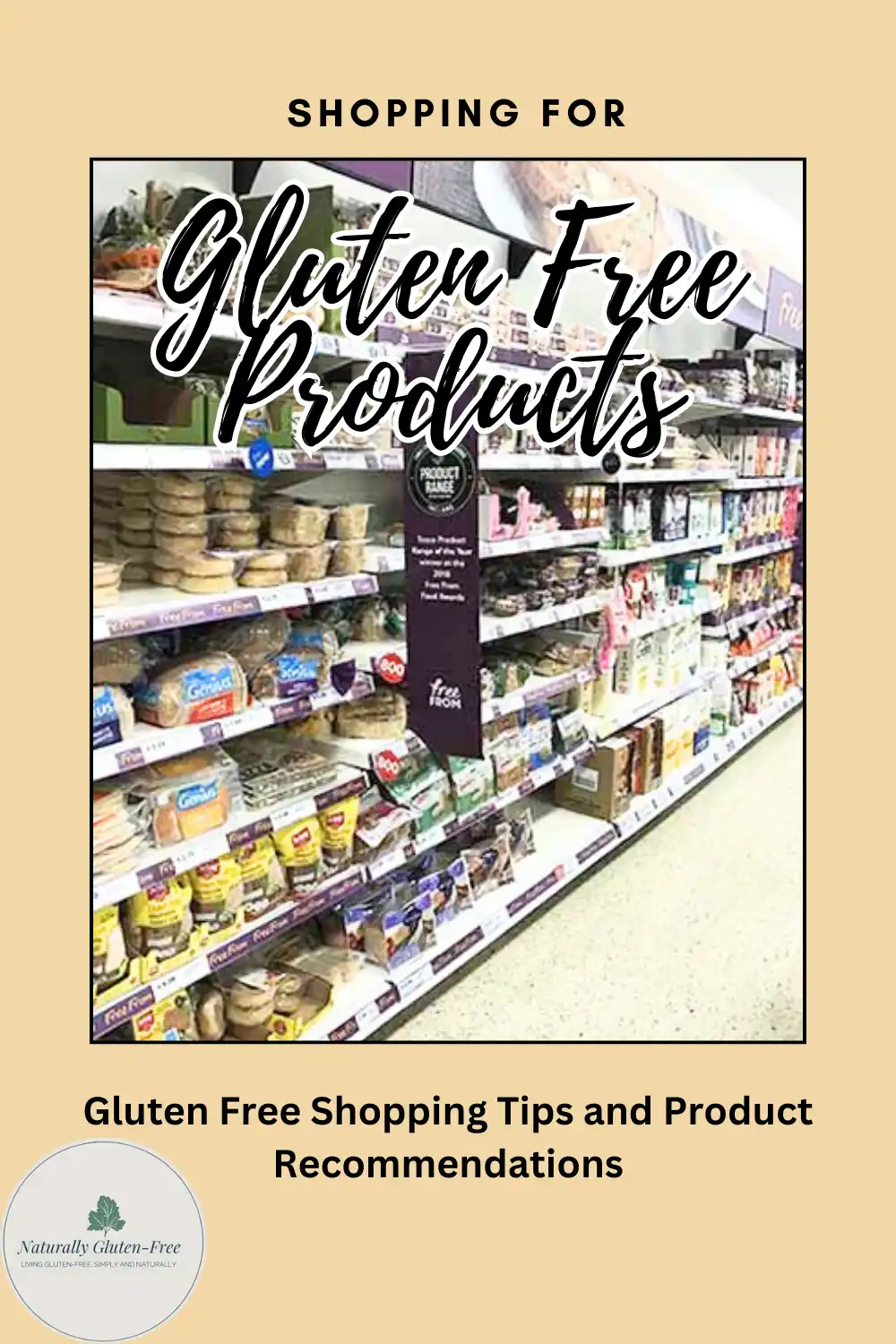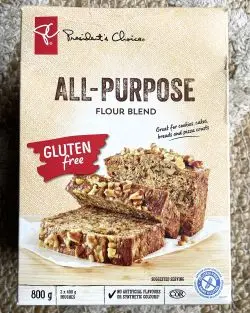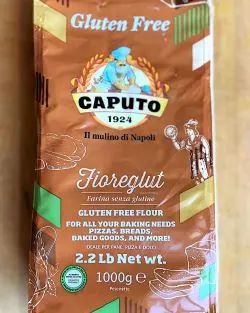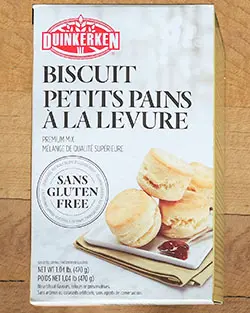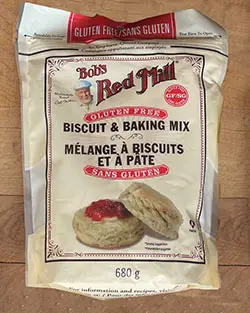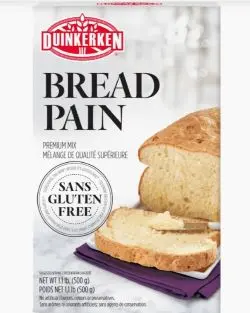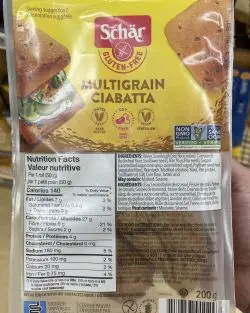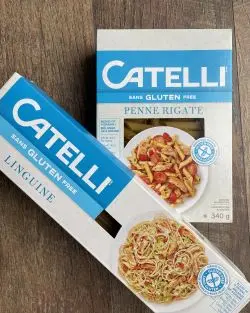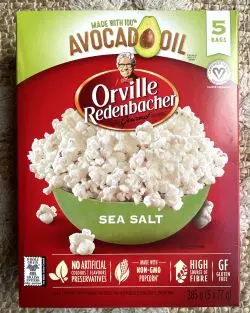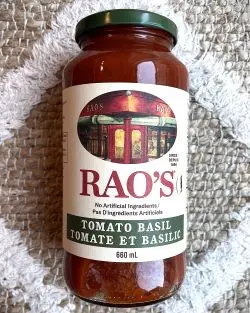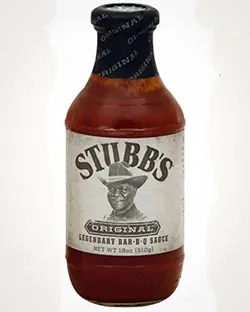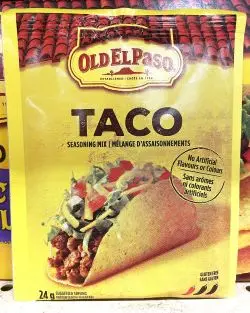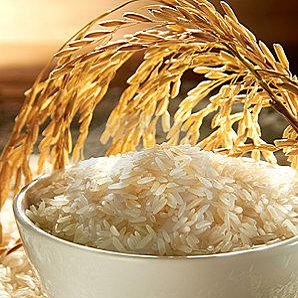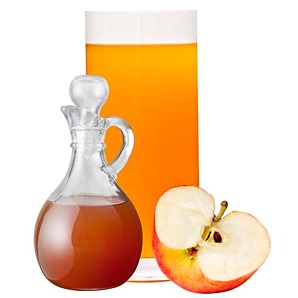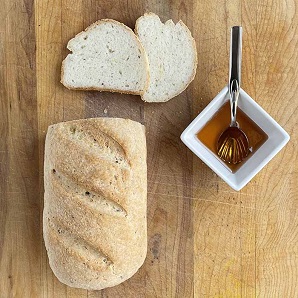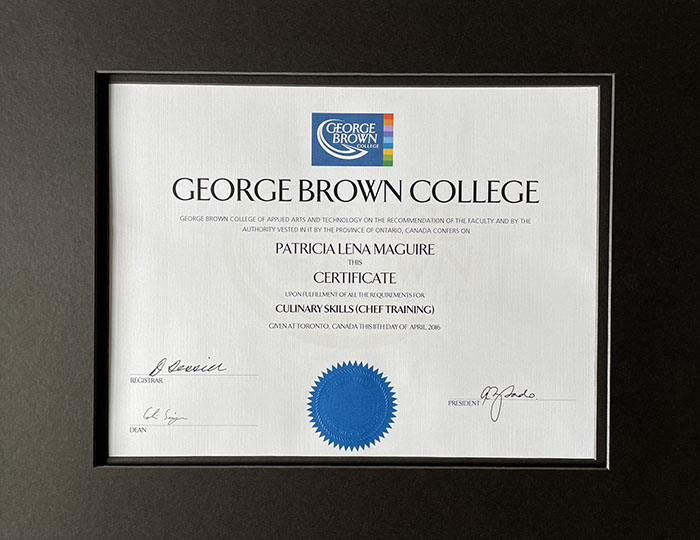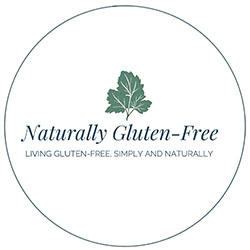- Home
- Gluten Free Food
- Gluten-Free Pasta
- Gluten Free Products
The Best Gluten Free Products to Stock Your Pantry and Fridge
If you’re like me, the first thing you did when you went gluten free was to stock up on everything in the store with a gluten free label. Then you thought “this is crazy expensive and most of it tastes like Styrofoam”.
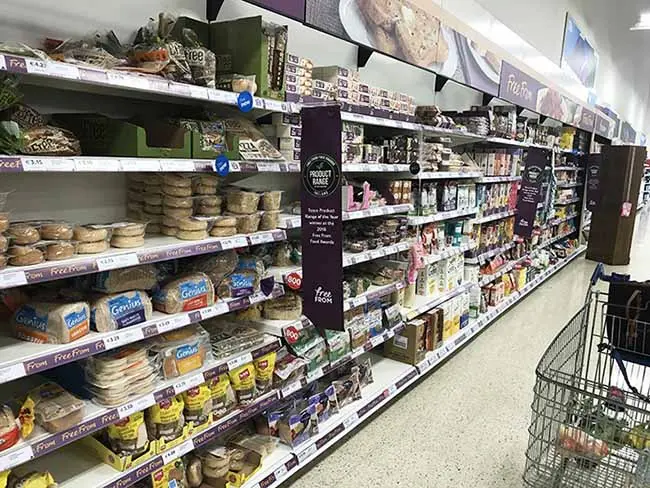
Navigating the world of gluten-free products can feel like maneuvering through a minefield. From deciphering ingredient lists to worrying about cross-contamination, to finding food that actually taste like food, gluten free shopping can be pretty daunting.
Those are among the reasons I advise against processed foods in favor of naturally gluten fee whole foods. But let's face it, packaged products are a modern necessity. Some, like dried beans, rice or canned tomatoes are ingredients in wholesome home cooked meals. Others are necessary to save us on those days when there is nothing ready and we don’t have time to cook from scratch. It’s all about balance.
In this article, we'll explore effective strategies for finding high-quality gluten-free products, understanding labels, and making safe, delicious and mostly healthy choices.
Read through or use the links below to jump to the sections that interest you.
Defining Naturally Gluten Free Products
The terms “natural” or “naturally gluten free” can be hard to define. So let’s nail that down to start.
Natural As A Continuum
I think of “natural” as a continuum. At one end are whole foods the way they come from farm. Whole fresh produce and fresh cuts of meat are examples. A little further up the line are minimally processed foods. Think of chopped vegetables, marinated meats or cooked foods. Then you get into items that are packaged or canned and have a short ingredient list of items that you recognize as food. At the far end is ultra-processed foods. These are the items that have ingredient lists the length of your arm that are chocked full of chemicals.
What, Then is “Naturally Gluten Free”?

To me, “naturally gluten free” is also a continuum. Again, whole foods are as one end, and
processed foods that are specifically formulated to be gluten free are at the
other. On the labels you’ll see
ingredients like xanthan gum and tapioca starch which are ultra-processed
emulsifiers and thickeners designed to mimic the properties of gluten and hold
the product together.
In the middle, we have products that are simply gluten free in their original form. I would include tomato sauces, rice crackers and corn tortillas in this category.
With this in mind, you’ll see products all along the continuum in my reviews below. But I encourage you, as I try to do, to focus your diet on foods as close as possible to the left of the continuum.
Pin for Later
How to Shop for Gluten Free Products
Finding foods that are safely gluten free can seem daunting at first, but once you get the hang of it, it’s not so hard.
Finding Gluten Free Products is Easier if You Lean To:
- Read labels carefully and understand gluten-free certifications
- Be aware of potential cross-contamination risks
- Identify trusted brands and retailers specializing in gluten free products
- Consider factors like taste, texture, and nutritional value
- Choose products with a short ingredient list to minimize processed foods.
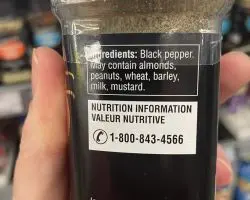 May Contain Wheat
May Contain Wheat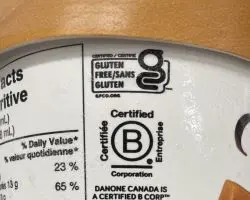 Gluten Free Certification
Gluten Free Certification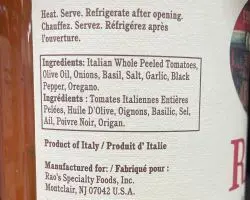 Short Ingredient List, Real Food
Short Ingredient List, Real FoodWhere to Shop for Gluten Free Products
Your local grocery store is a good place to start. It’s familiar and you may be pleased to find
many of your favorite products are naturally gluten free.
Specialty or health food stores often go out of their way to offer foods that cater to special diets including gluten free. If you have issues with dairy or eggs you’ll often find good vegan products too.
Gluten free bakeries are popping up all over the place. Most cities have at least one and so do many small towns. These are small businesses often run by people who have a celiac family member, so they understand the need for delicious gluten free breads and treats.
Online retailers offer gluten free foods for delivery. Good examples include:
- Amazon is international an has lots of choice
- Well.ca is a Canadian online store with lots of gluten free choices
- Natura Market is another Canadian Choice
- The Gluten Free Mall and Gluten Free Palace are Popular in the U.S.
- The Gluten Free Kitchen and Sainsbury’s are popular in the U.K.
Several brands can be ordered online from the supplier’s website. Schar, Promise and Duinkerken are a few examples.
Gluten Free Products and Recommendations
I did not receive a free samples and I was not asked to review these products unless specified. I've included each product because I've used it myself. I would not recommend anything that I would not use.
If you want to buy any item through the links I provide, I may earn a small commission, at no cost to you.
Gluten Free Flours and Baking Mixes
If you're looking for the best gluten free baking products, I think you'll find this helpful.
There are many gluten free flours to choose from, each having it's own special properties and functions. At the very least you need a good all purpose flour blend..
Two of the most popular brands are: Bob's Red Mill and King Arthur. In Canada, President's Choice All Purpose Gluten Free Flour is one of more popular brands. In the U.K. I hear a lot of folks recommending Becky Excell.
Gluten Free Flours
President's Choice All Purpose Flour Blend: I keep this in my pantry at all times. It measures like regular flour so it substitutes nicely in recipes. Perfect for thickening stews or gravies and for dredging breaded or fried foods. It's the flour I use for my traditional pizza crust and in all my gluten free baking. The ingredient list is pretty short: tapioca starch, modified potato starch, corn flour, modified cellulose and xanthan gum. The starches and gums do a good job of emulating gluten by holding your dough together. The color is a bit whiter than wheat flour, but that's okay with me.
Not currently available on Amazon
Caputo Fioreglut Gluten Free Flour: This is a specialty imported flour from Italy. It's amazing for pizza and focaccia. This one is pricey, so it won't likely be your basic gluten free flour but you might like to keep it on hand for a special treat. A word of warning, Caputo flour is made from wheat starch which is controversial. I'd did a full review here along with a comparison with the PC flour above.
Baking mixes are an excellent way to get home baked flavor and freshness but with a whole lot less measuring, mixing and dealing with multiple ingredients. They tend to be a little more expensive than baking from scratch but much less than ready made. Here are a few that I've used.
Gluten Free Baking Mixes
Duinkerken Gluten Free Biscuit Mix: This is a Canadian Brand that I keep in my pantry at all times. These biscuits (or scones for those of you in the U.K.) remind me of my grandmother's tea biscuits that I used to love as a kid. They puff up beautifully and have a lovely light texture. I did a full review here along with a comparison of Bob's Red Mill biscuit mix. If you like chicken and dumplings, look on the Duinkerken website for their dumpling recipe using the biscuit mix as the base.
Bob's Red Mill Gluten Free Biscuit and Baking Mix: Bob's Red Mill is also a family owned business which started in Redding, California and later moved to Milwaukee, Oregon. They are not exclusively gluten free, but their gluten free products are produced in a dedicated facility. I did a comparison between biscuits made with Bob's Red Mill mix and the Duinkerken one above. Bob's Red Mill turned out a good biscuit, although it came in second in the compare. It rose up nicely and had a slightly layered texture which is what you're looking for in a biscuit. The color is more beige than creamy white.
Duinkerken Gluten Free Bread Mix: If you like homemade bread, but want the simplicity of a mix, then this Duinkerken gluten free bread mix might be the solution. The ingredients are pretty simple: potato flour, potato starch, rice flour, tapioca flour, corn starch, sugar, salt, xanthan Gum. You add your own eggs, oil, yeast and water then mix, let rise and bake. The crumb is nice and even and the texture is good. You can even make it in your bread maker or use it to make buns. I've tried many gluten free bread recipes but none have turned out as good as this mix, so it's what I use now most of the time.
Gluten Free Breads, Pastas, and Cereals
There are a ton of gluten free breads on the market and you could spend a lot of time and money trying them all to find one you like. Below are the ones I've tried and my impressions. Hopefully this will save you some time and disappointment.
Gluten Free Breads
Promise Gluten Free Bread: This is hands down the best gluten free bread that is widely available in supermarkets.
The company is based in Ireland and ships worldwide. The texture is soft like normal bread. You don't have to toast it, though it's great toasted. Best of all, the slices are the size of a normal slice of bread.
My favorites are the brioche and the multigrain loaf although I'm sure all of their products would be fantastic. Only two complaints: they have a lot of ingredients and they don't come in a resealable bag.
I don't have a link for you but you can buy Promise gluten free bread in most grocery stores in Canada.
In the US try Walmart, Kroger, Whole Foods, Publix or Sprouts.
In the UK try Tesco or Sainsbury's.
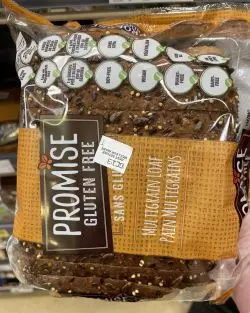
Schar Gluten Free Bread and Buns: The Schar brand began in the South Tyrol area of Italy. No surprise there. Why is it the Italians have this gluten free thing figured out so much better that we do?
They are now a worldwide brand with great tasting, soft gluten free breads and buns. On my recent Mediterranean cruise I complimented the chef on the gluten free roll he served me with my soup, assuming it was homemade. He brought me the package and it was a Shar multigrain ciabatta. I buy these all the time now.
I also like their hamburger buns although they are a bit small. One word of caution, some Schar products contain gluten free wheat starch which is a bit controversial.
Thank goodness for gluten free pasta. When I was first diagnosed with celiac disease it wasn't the loss of bread that caused panic, it was pasta. Every plate of delicious, saucy pasta I'd ever eaten flashed before my eyes. Since then, I've tried many gluten free pastas and come up with a few favorites.
Gluten Free Pastas
Catelli Gluten Free Pasta: This is a Canadian brand and is the closest I've found to regular wheat pasta.
They use a combination of grains: white rice, brown rice, corn and quinoa and I think this might be why it holds up better than other gluten free pastas and why the taste and texture are closer to wheat pasta.
It comes in most of the traditional shapes: spaghetti, linguini, fusilli, rotini, penne, macaroni and even an oven ready, no boil lasagna!
Asian Rice Noodles: One of the very best and most delicious ways to enjoy naturally gluten free food is to explore international cuisines. Rice noodles are a staple in Asian dishes such as Pad Thai. I'm not loyal to a particular brand.
You can find these in your grocery store or local Asian market. They are easy to cook and are a must to make any Asian noodle dishes you may wish to try.
The thin vermacilli noodles top off soups beautifully. Just soften in hot water and add seasoning for a comforting replacement to ramen.
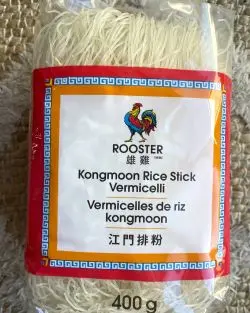
Gluten Free Snacks and Treats
There are healthy gluten free snacks and some that are not so healthy. The ones I review below span the spectrum of health as well as the "natural" spectrum we discussed above. That's okay. Of course it's best to opt for healthy natural snacks but the odd time a treat is fine too.
Popcorn might be one of your best choices. It's low fat (a little butter is okay), it's not fried, it has simple ingredients (just one, corn) and is easy to make. You can do it in a pot with a little oil or, if you really like popcorn, get an air popper.
No need to spend a lot of money, the store brands are fine.
Popcorn is naturally gluten free and you don't even need a gluten free label. Of course always read labels.

Orville Redenbacher Gourmet Popcorn: As much as I prefer the plain popcorn because it's cleaner - more natural if you like, microwave popcorn is a great convenience. I like this avocado oil and sea salt one because it has few ingredients and avocado oil is higher quality that the palm oil you find in other varieties. I like butter on my popcorn so I melt some and add my own rather than relying on the "buttery" flavored varieties.
Kind Mini Bars: When it comes to gluten free snacks, this is generally a clean healthy choice. Ingredients you can pronounce, great taste and convenient. They do contain sugar so keep that in mind. Nuts give them lots of protein and nutrients an they also add to the calories. That's why I like these minis at just 100 calories each. They are a great choice to throw in your pocket or purse for an emergency and I pretty much always have one with me if I'm going to be away from home for more than a few hours.
Tostitos Scoops and Salsa: Corn chips in general are naturally gluten free products. The danger may be in the flavorings so always check the label just in case. Also, flavoured varieties often have lactose so watch for that if it's a problem for you. I keep scoops in the pantry for a salty snack.
Paired with a little salsa, it's not the worst thing you can have in moderation. Salsa is also naturally gluten free. Of course read the label to ensure that nothing unexpected is added.
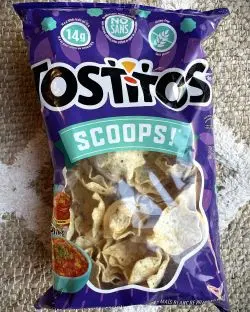
Lay's Classic Potato Chips: Okay, I'm not going to go so far as to say these are healthy, but as far a potato chips go these aren't so bad, in moderation. Their salty crunch satisfies the salt craving. The ingredient list is short and recognizable and they are naturally gluten free. Full disclosure, these are a serious weakness of mine. I try not to keep them in the house but every so often a bag finds its way into my pantry, entirely without my permission ;)
Potato chips in general are gluten free. Watch for flavorings, that's where the gluten and lactose can sneak in. There may also be cross contamination in manufacturing so as always, read labels.
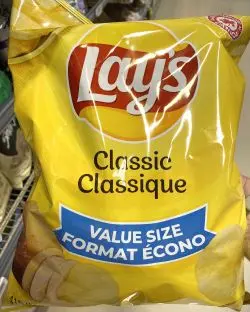
Gluten Free Condiments, Sauces, and Seasonings
When I first went gluten free, this was the category that confused me the most. I was used to relying on bottled and canned sauces as well as packaged seasoning mixes for all my cooking and suddenly many of those were off limits.
Making your own homemade sauces, condiments and seasonings is incredibly satisfying once you learn the basics. But time doesn't always allow for that, and there are some very good, gluten free products that will save you time. As always, check labels and look for short ingredient lists featuring real food.
Gluten Free Pasta Sauces
Classico Pasta Sauce: Made by KraftHeinze and available globally, this is my favorite pasta sauce. It's naturally gluten free goodness goes on spaghetti and penne. It goes into my gluten free lasagna. I even use it for my gluten free pizza. The flavor is classic of the Napoli province of Italy with basil and a hint of garlic. The ingredient list is short and recognizable: Tomato puree, water, tomatoes, tomato juice, onions, garlic, salt, herbs, vegetable oil, black pepper, citric acid, calcium chloride. The last two ingredient are common in canning to preserve color, texture and freshness.
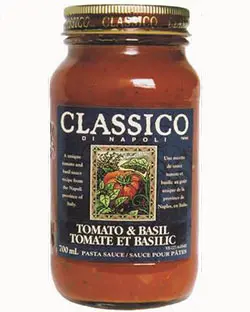
Primo Thick & Zesty Pasta Sauce: With the skyrocketing cost of food, we all look for ways to cut corners. This pasta sauce is almost half the price of the Classio and it's naturally gluten free. The flavor is fine, but when you look at the ingredient list, you can see it's further to the right than I like. You'll find sugar / glucose-fructose, modified corn starch, dried onions, garlic, parsley and basil. I use it on occasion when I'm trying to keep the grocery bill under control, but prefer a more "natural" product if it's in the budget.
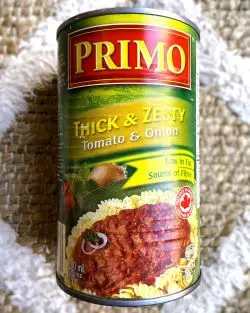
Rao's Tomato Basil Pasta Sauce: I'm saving the best for last. This is the best, naturally gluten free jarred pasta sauce I've tried. Sadly, it's pricey and more than twice the cost of the Classico, but look at those ingredients! Nothing artificial. Nothing your great-grandmother wouldn't recognize as food. It's even low carb and suitable for a keto diet. Considering the price, I don't buy this all the time, but love to have it as a treat. Afterall, I don't eat out much so I can treat myself at home. How about you?
Gluten Free Barbecue Sauce and Other Meat Sauces
HP Sauce: Caution! Check the label every time!!
In Canada I buy the HP Original steak sauce and it's gluten free. Here it is made from white vinegar rather than malt vinegar. Not all flavors are gluten free and the formulations are different in different countries.
This is my favorite mostly because it's what I grew up with and it is one of the most popular brands here so I'm relieved it's gluten free. Even if you are in Canada still always check the label and if you are having it in a restaurant check the label there too and ask to ensure they are not refilling their bottles with a different brand.
I've decided not to provide a link incase you get directed to a product that's not gluten free.
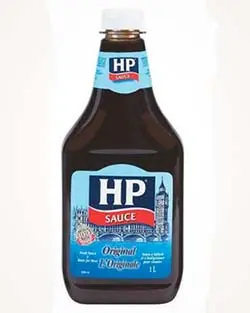
|
Bull's Eye Barbecue Sauce: This tangy and bold barbecue sauce is great for everything you would use a barbecue sauce for. It is produced by Kraft Heinz in the United States and Canada. They have different flavors so by all means try them all. It's perfect for grilling steaks, chicken, pork and even salmon. Use it on chicken wings or as a dipping sauce for kabobs. Of course always check the label, and avoid the Guinness flavor. It's the only one I've come across that's not gluten free. |
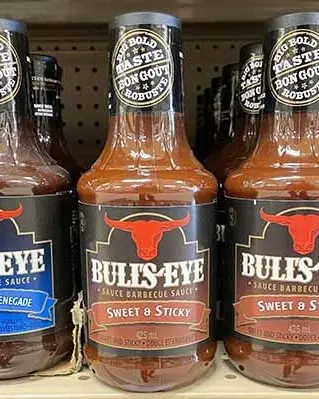 |
|
Stubb's Original Legendary Bar-B-Q Sauce: Authentic Texas flavor and authentic Texas history come through in every bite. There is a good chance if you open my fridge you'll find a bottle of Stubb's in the door. Did someone say pulled pork? As of 2010 Stubb's is certified gluten free so you are totally safe! Lot's of flavors to choose from and available internationally. |
Other Gluten Free Sauces
VH Soya Sauce: Soya sauce in general is not a gluten free product. Soya sauce is made with soy beans but fermented in wheat.
VH however has recently made all of their products gluten free and sacrificed none of the flavor. So go ahead and enjoy all of those Asian dishes you love to make.
Caution: If you are eating Asian cuisine in a restaurant you still need to be careful. Check to see if the soya sauce they are using is gluten free.
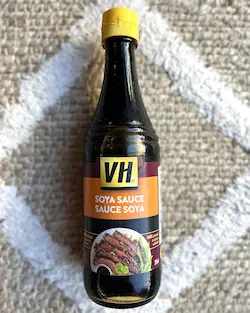
San-J Tamari Sauce: This was the original gluten free soya sauce before there was gluten free soya sauce.
Tamari hails from Japan, and where Chinese soya sauce is made from soy and wheat, tamari is made from soy and rice. This makes it naturally gluten free.
The flavor and color is lighter yet richer and less salty than the Chinese soya sauce we're used to in North America. I still often keep it on hand for a change. As always, check the label as not all are gluten free.
Gluten Free Spices and Seasonings
Most single spices like turmeric, cumin, cinnamon, nutmeg etc. are naturally gluten free and low risk for contamination. Of course check labels. Where you need to be extra careful is with seasoning blends and mixes. They may use gluten products as fillers, carriers for flavor or to combat clumping. Below are the spices and seasoning I've tried and trust.
Club House and McCormick Spices: Club House has been a trusted Canadian brand in seasonings since the 1880's. McCormick's was founded in the U.S. in 1889. In 2006, McCormick acquired Club House, bringing these two trusted brands together.
Both brands have maintained their reputation for producing safe, gluten-free spices, which makes them favorites in the celiac community. Single ingredient spices are gluten free. For spice mixes, check the label but I've not come across one that contains gluten.
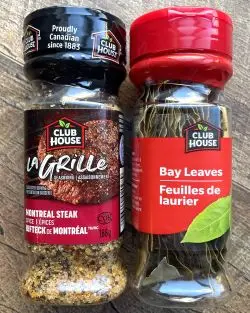
President's Choice Spices and Spice Blends: Since grocery prices gone crazy, I've looked for places to save a little, and spices are a good target. Those little bottles are so expensive! That's why I've started buying presidents choice spices.
President's Choice is a Canadian brand. Their spices are good quality and significantly cheaper than the premium brands.
All of their individual spices are naturally gluten free. All of the blends I've checked are gluten free as well, but do read labels before you purchase just to be sure.
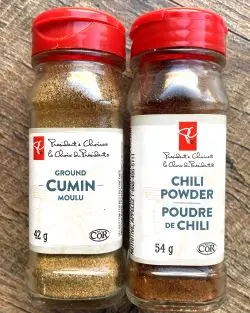
Old El Paso Taco Seasoning is naturally gluten free.
As much as I'm all about homemade, if you're doing taco night it's likely because you're looking for simplicity. Taco's are the perfect gluten free choice.
The ingredient list is reasonably simple: Chili Pepper, Maltodextrin, Salt, Onion Powder, Spice, Corn Starch, Sea Salt (Potassium Magnesium Chloride, Salt).
Maltodextrin is a sweetener that is gluten free despite the fact that it can be derived from wheat. It's highly processed so you may want to limit your consumption. But as a small part of a healthy diet, I wouldn't be too concerned. Relax and Enjoy!
